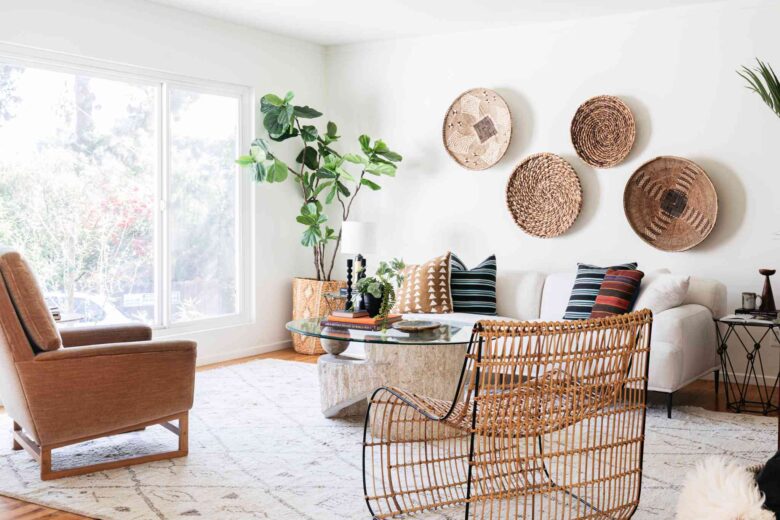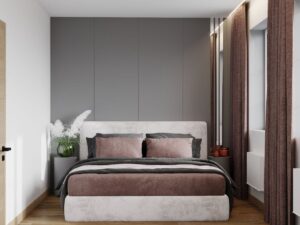A well-designed living room is the heart of any home. It’s the space where memories are made, guests are entertained, and you unwind after a long day. But achieving a balance between comfort and style can often seem daunting. This guide will walk you through everything you need to know to create a living room that’s not only beautiful but also functional.
Understanding Your Needs
Before choosing furniture or painting walls, it’s essential to understand your unique requirements. Think about how your living room will be used on a daily basis. Do you love hosting movie nights with friends? Or do you envision cozy evenings with family gathered around? For families with young kids, durable furniture and spill-proof fabrics are a must. Meanwhile, minimalists might gravitate toward sleek designs with limited decor. Your lifestyle and personal preferences are the foundation of your design plan.
Layout and Space Planning
Efficient layout and space planning can transform even the smallest living rooms into inviting spaces. Start by considering the shape and size of your room. Place larger furniture, like sofas, against walls to ensure a spacious and open feel. Avoid blocking pathways by keeping at least three feet of clearance in high-traffic areas. Additionally, zone your space strategically. For example, position a cozy seating arrangement around a central coffee table for conversations, and designate a corner for books or hobbies.
Color Palette and Ambiance
Colors have the power to influence mood and energy in a living room. Earthy tones like beige, olive, and terracotta create a warm and inviting ambiance, while neutral colors like white and gray ensure timeless elegance. If you’re brave enough to add some drama, consider accent walls in bold hues like navy blue or emerald green. Lighting also plays a key role here, as warm lighting complements cozy color schemes, while bright, cool lighting pairs well with lighter, modern palettes.
Furniture Selection
When choosing furniture, comfort should be your top priority. Look for sofas and chairs with deep cushions and high-quality upholstery that feel as good as they look. Test pieces in-store whenever possible, ensuring they provide adequate back and neck support. Style matters too, whether you’re drawn to sleek, mid-century modern designs or plush, traditional aesthetics. Don’t overcrowd the room; stick to essential pieces, like a sofa, coffee table, and a couple of chairs, and then layer with decor.
Lighting
The right lighting can significantly elevate the style and functionality of your living room. Take full advantage of natural light by using sheer curtains or adjustable blinds during the day. For evenings, decorative floor lamps, table lamps, and wall sconces create a cozy atmosphere. Install a dimmer switch for overhead lights, giving you the flexibility to set different moods. Layering light sources, including task and accent lighting, adds depth and ensures no corner is overlooked.
Incorporating Textiles
Textiles are an easy way to introduce warmth and personality to your living room. Rugs help define spaces within the room while adding softness underfoot. Opt for rugs that complement your color scheme and are appropriately sized for your layout. Pillows, throws, and curtains are ideal for playing with patterns, textures, and additional layers of comfort. Rotate these items seasonally for a fresh look throughout the year, without having to completely redecorate.
Adding Personal Touches
Personal touches are what make a house a home, so don’t shy away from incorporating objects that tell your story. Gallery walls with family photos or travel souvenirs can create a focal point and conversation starter. Bookshelves filled with your favorite reads or quirky decor pieces can add character. Plants and greenery are another great way to breathe life into the room, softening hard edges and adding a pop of natural color.
Popular Living Room Styles Chart
Here’s a handy chart summarizing some of the most popular living room styles, their key characteristics, and ideal color palettes.
|
Style |
Key Characteristics |
Ideal Color Palette |
|---|---|---|
|
Modern |
Minimalistic lines, neutral tones, sleek furniture |
White, gray, black, and metallics |
|
Traditional |
Rich wood tones, elegant furnishings, classic patterns |
Beige, deep red, and gold |
|
Bohemian |
Eclectic decor, vibrant patterns, layered textiles |
Bright tones mixed with earthy hues |
|
Scandinavian |
Functional yet cozy, light wood, clean design |
Light neutrals, pale blues, and greens |
|
Industrial |
Exposed brick, metallic finishes, raw materials |
Gray, black, tan, and rust tones |
This guide can act as a quick reference when narrowing down your preferred aesthetic.
Bring Comfort and Style Into Your Living Room
Achieving the perfect harmony of comfort and style in your living room doesn’t have to be overwhelming. By thoroughly assessing your needs, carefully planning the layout, and paying attention to details like color, lighting, furniture, and textiles, you can create a space that feels uniquely yours. Don’t forget to sprinkle in those personal elements that transform any room into a warm, inviting haven.
Maximizing comfort and style is as much about reflecting your personality as it is about functionality. With these expert tips, you’re well on your way to designing a living room you’ll love spending time in.
FAQs
Q1. How do I select a functional layout for a small living room?
Start by positioning essential furniture, like your sofa, along walls to save space, and opt for multi-functional pieces like a storage ottoman or nesting tables.
Q2. What’s the easiest way to update a living room on a budget?
Swap out textiles like pillows, throws, and curtains, or add a fresh coat of paint to change the room’s vibe without spending too much.
Q3. How do I mix patterns and textures in a living room without making it feel chaotic?
Stick to a cohesive color palette to tie patterns together. Introduce different textures for depth, but limit patterns to three or four to avoid overwhelming the space.
Q4. What lighting works best in a multi-use living room?
Layered lighting is key. Combine ambient (overhead) lighting with task lighting (table lamps) and accent lighting (wall sconces) to suit different activities and moods.
Q5. How do I choose the best rug size for my living room?
A good rule of thumb is to ensure that all front legs of your sofas and chairs fit on the rug. It should be large enough to define the seating area.




